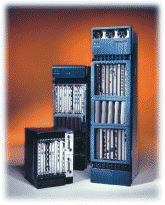| MIT Green Computing |
| An Examination of the Environmental Effects of Computers at MIT |
|
Internet Energy Consumption In fact, the current fuel-economy rating estimates that about 1
pound of coal is needed to create, store a send 2 megabytes of data.
(Dig more coal -- the PCs are coming, Peter W. Huber, Forbes Magazine,
05.31.99). The average Internet home user is on-line 12 hours per
week (Forbes/IntelliQuest Study). Estimates indicate that each PC
connected to the Internet requires around two to three other pieces
of network equipment. Each one of these network components requires
a significant amount of power. For example, Cisco's 7500 series
router, can transfer over 400 million bits per second but uses 1.5
kilowatts of power. The experiment below conducted at 4:05 EST on Monday, December 10th shows the path of a packet traveling from MIT (Cambridge,MA) to Amazon.com (Seattle, WA). The single packet traverses at least 15 routers and many more network links, gateways, and other network devices. Dowloading a web page often involves a number of packets being sent back and forth between the requester and the requestee. traceroute to amazon.com (207.171.183.16), 30 hops
max, 40 byte packets Other Studies Numerous large scale studies have been conducted on the energy use of the Internet. Some studies estimate that the Internet consumes 7% of the United States power while new others estimate it consumes around 2-3%. One report on Internet energy use may be found here.
Source of both Figures: Cisco Systems, Inc.
|
|||||||

